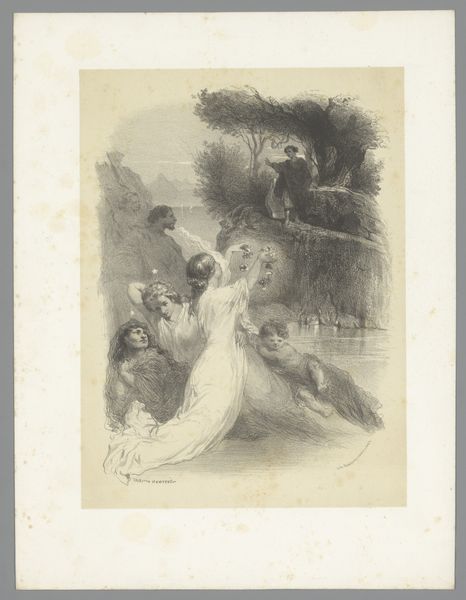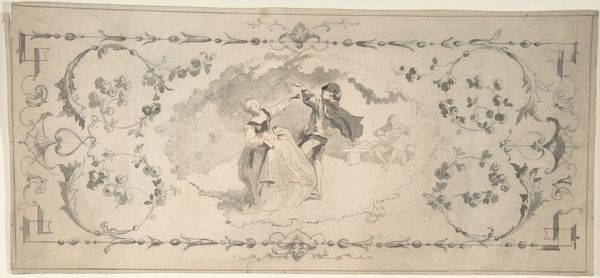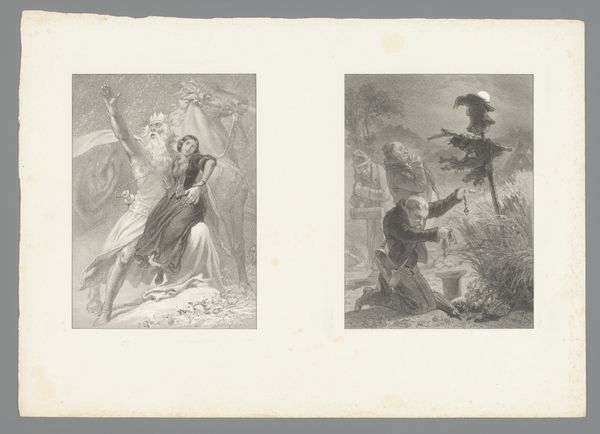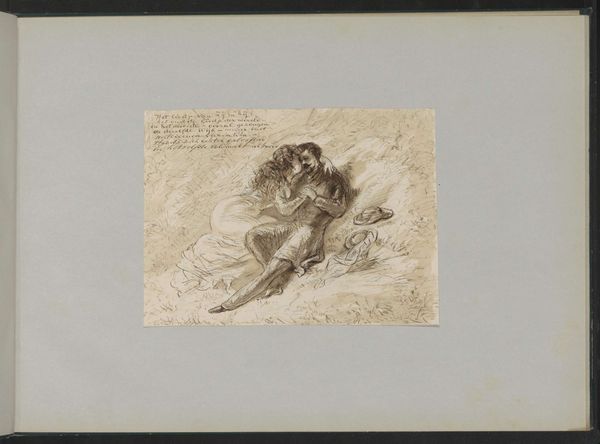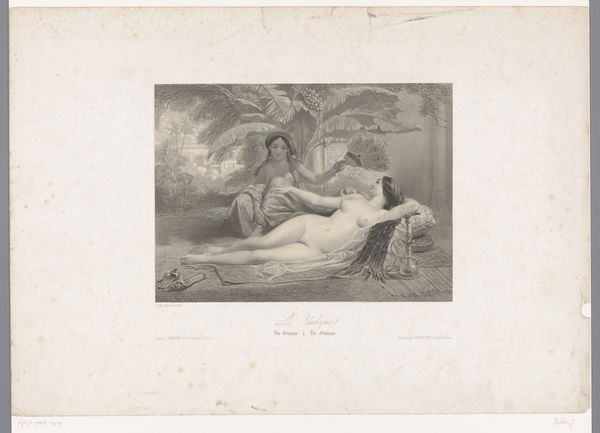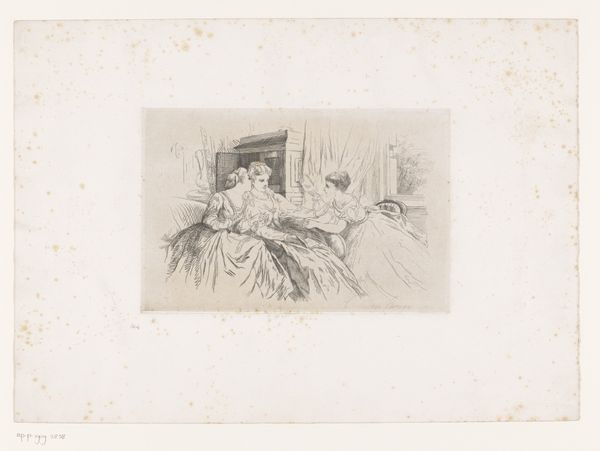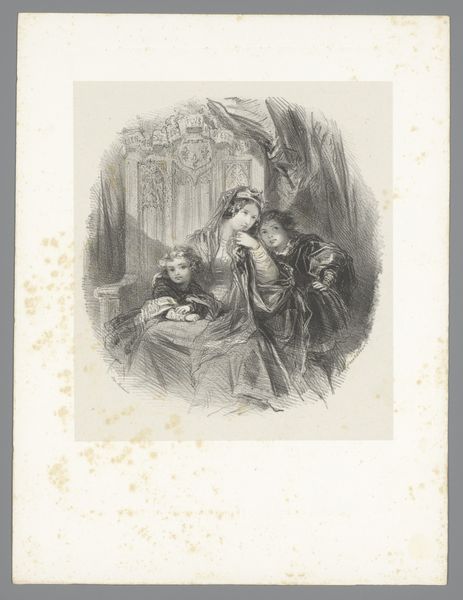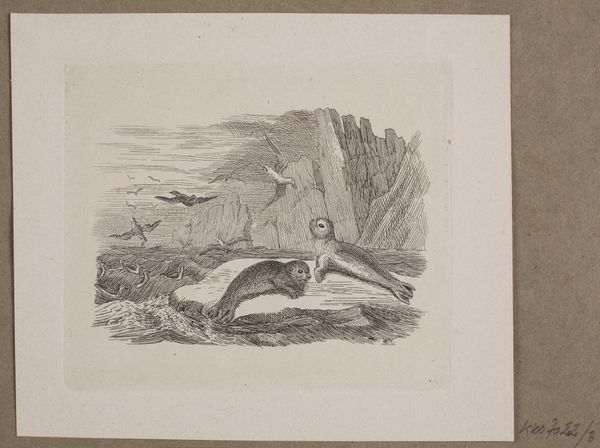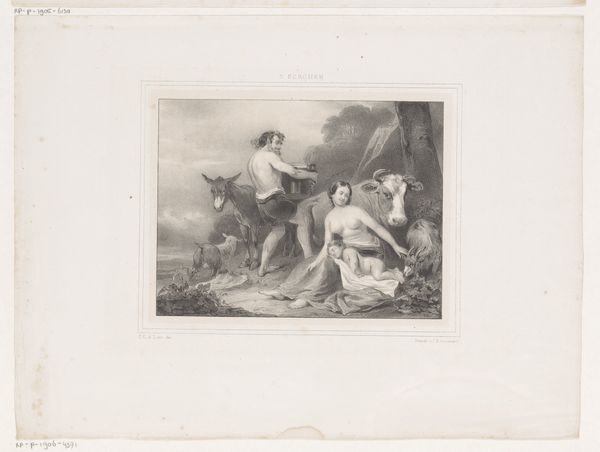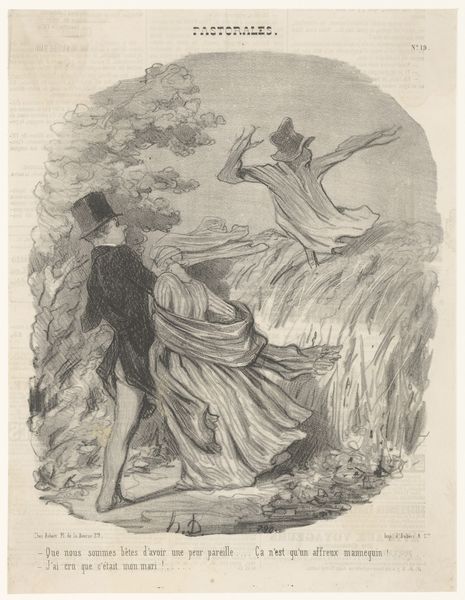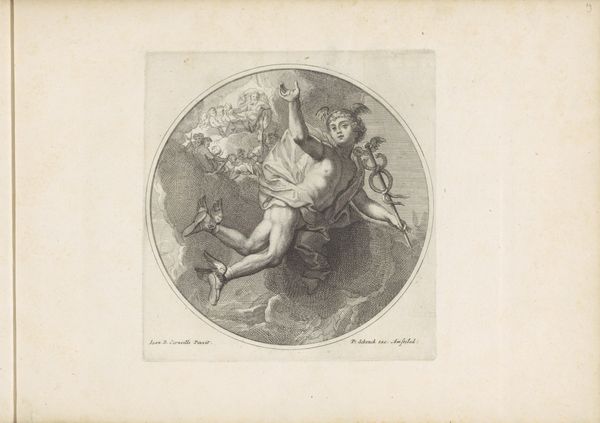
drawing, watercolor, ink
#
portrait
#
drawing
#
narrative-art
#
oil painting
#
watercolor
#
ink
#
watercolour illustration
#
watercolor
Dimensions: height 251 mm, width 337 mm
Copyright: Rijks Museum: Open Domain
Editor: This drawing, "Gustave Doré on his Deathbed," from after 1885 by Alexander Ver Huell, uses ink and watercolor, giving it a delicate, almost dreamlike quality. It feels very personal, like a candid snapshot. What strikes you about this piece? Curator: The immediate thing that grabs me is the raw depiction of mortality through material means: the tangible inks and watercolor washes used to represent the fading vitality of Doré. Look at the social context – an artist, likely commissioned by someone in their social circle. How does that labor exchange impact our understanding of the work? Editor: I guess it makes it feel more… real? Like a trade, someone doing their job documenting something difficult. Curator: Exactly. And think about the materials themselves. Ink and watercolor were accessible mediums, relatively inexpensive compared to oils. This suggests a different kind of patron relationship, one perhaps focused less on lavish display and more on intimate documentation. What does it tell us about who could afford to commission art? What choices are available to document those dying that are less privileged? Editor: So, the very materials chosen, and the social network that enabled its creation, speaks to a broader understanding of art production at the time? Curator: Precisely! It dismantles the romantic idea of the solitary genius, forcing us to consider the means of production, the economic factors, and social relationships embedded within the image itself. This pushes beyond just aesthetics and ventures into cultural studies. Editor: That gives me a new perspective. I was initially drawn in by the scene, but thinking about the social elements and accessible materials highlights who could create and consume art in that era. Curator: And how the circumstances of that making, affect what is seen.
Comments
No comments
Be the first to comment and join the conversation on the ultimate creative platform.


